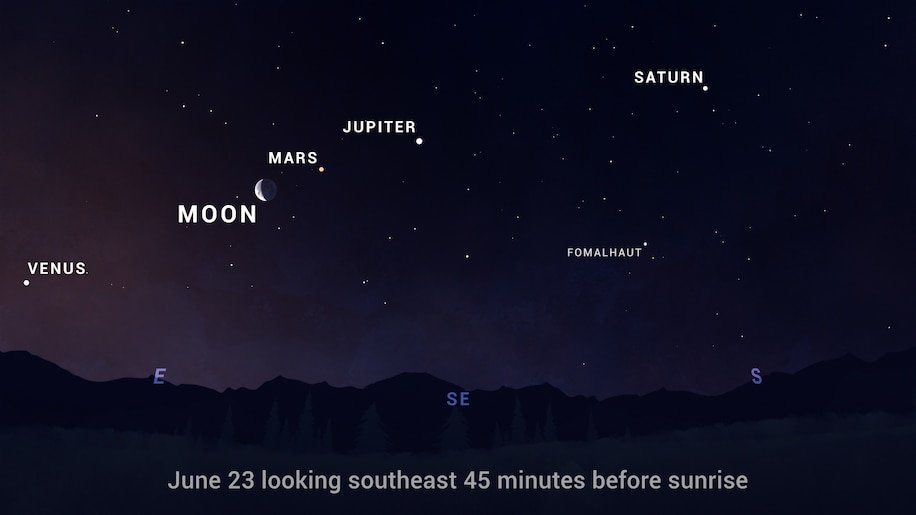June Stargazing
For all you stargazers, the June sky is full of interesting things. In the northeastern sky is the constellation Hercules; you'll need binoculars or a telescope to see the globular cluster of 100,000+ stars where his head is.
Adjacent is Lyra and its Ring Nebula. Lyra is easy to find: look for Vega, the fifth brightest star in the night sky. Vega will be the North Star in about 12,000 years.
The great summertime constellation Scorpio is on the rise in the east where Orion was during the winter, and it’s always a sight with the orange giant star Antares. The constellation looks like a crossbow. And high above us, another orange giant, Arcturus, the foot of Bootës (the Herdsman constellation).
Also high above is one of my favorite constellations: Leo, which really does look like a recumbent feline.
If you get up early, you can see an alignment of the planets above the southeast horizon in the morning twilight. This will peak June 19 – 27 with five (or six) planets in a row: Saturn, Jupiter, Mars, (the moon), Venus, and Mercury: all five planets that are visible with the naked eye. Uranus can be seen above Venus with a telescope.
Lastly: June 14 is the full moon - the first of three consecutive supermoons we'll see this summer (the moon is at perigee, the closest point in its eliptical orbit to earth, which is why it appears larger).
About the author
Garrett Peck is an author, historian, and tour guide in Santa Fe. He is a board member of the Santa Fe Professional Tour Guides. He leads historic tours and excursions in the City Different, including Willa Cather’s Santa Fe, and is writing a book about how Cather wrote her “best book,” Death Comes for the Archbishop. You can reach him at www.garrettpeck.com.


